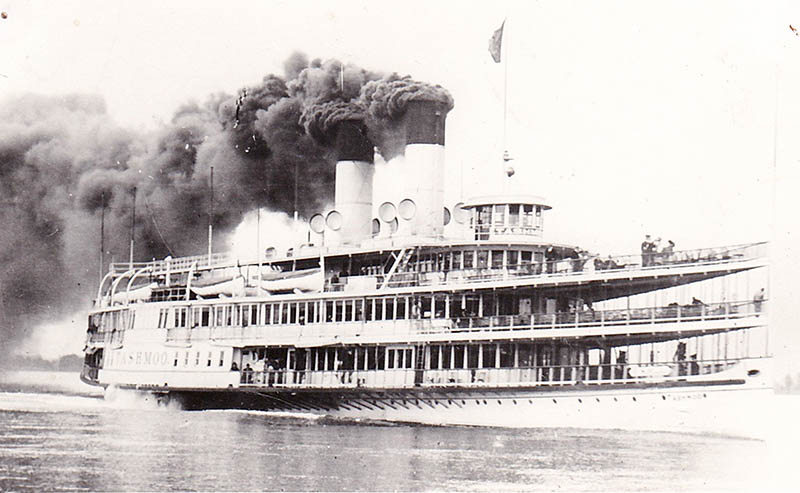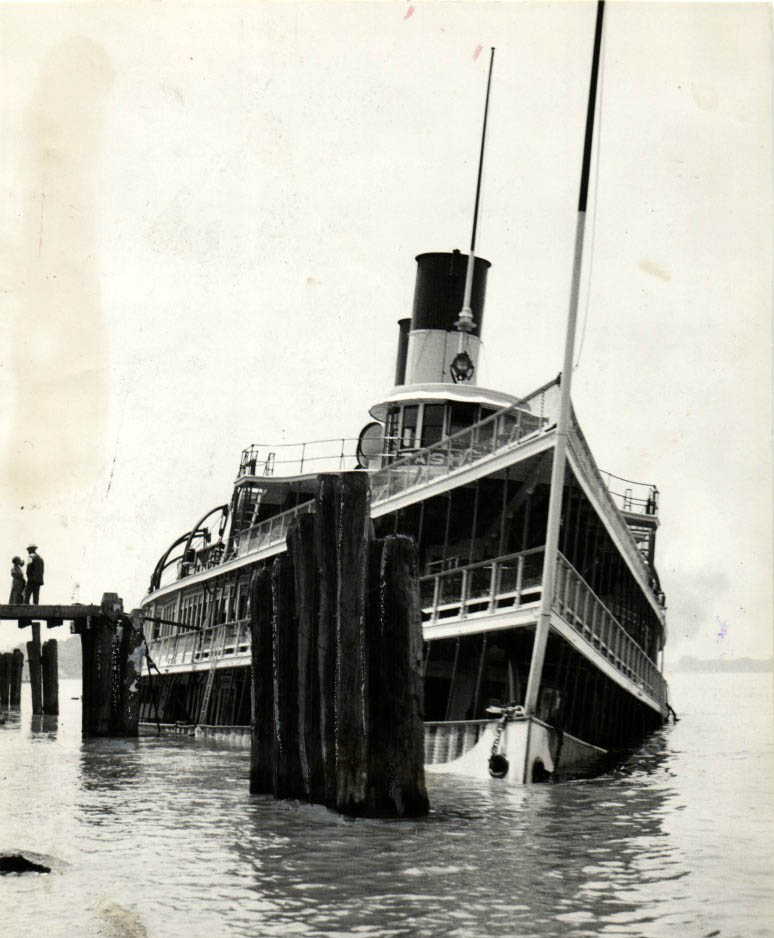The Tashmoo was a steamboat passenger sidewheeler on Lake St. Clair and Lake Huron. It was reputed to be one of the fastest ships on the Great Lakes at the time. The Tashmoo was the first ship constructed in 1899 and launched on 31 December 1900. It was designed in Wyandotte, Michigan by the Detroit Shipbuilding Company for the White Star Steamship Company of Detroit. The Tashmoo was called the “White Flyer,” and the “Glass Hack” due to the amount of windows on the boats.
Between 1901 and 1936 the swift paddle wheeler carried countless citizens of Lambton County on fun excursions down the St. Clair River, and could accommodate over 1,500 passengers. It was considered, for the time, a luxury ship. Teddy Roosevelt, the 26th president of the United States. took a cruise on the Tashmoo while visiting Port Huron, Michigan in 1902. The paddle wheeler made 20 stops on it’s cruise and had it’s own park “The Tashmoo Park” in Algonac, Michigan. The park was a popular spot for tourists as there were many summer activities, including a casino, but sadly Tashmoo Park closed in 1951.
The speed of The Tashmoo was well known. After a year of service on the St Clair River, a White Star Line official bragged that The Tashmoo could outrace one of two ships:: the “City of Erie” or the “City of Buffalo” in a contest. The claims were taken seriously and a competition between the Tashmoo and the City of Erie was set up for 4 June 1901. The course was 82 nautical miles (152 km; 94 mi ) and went from Cleveland, Ohio to Erie, Pennsylvania.

It was a back and forth lead between The Tashmoo and the City of Erie, but the Tashmoo eventually lost the race by 45 seconds. During the race the Tashmoo had two difficulties, first the wheelsman wasn’t able to steer with only a compass, and the second problem was the overheating of the boiler. The City of Erie travelled 21.76 miles an hour compared to the 21.70 miles an hour travelled by the Tashmoo.
So the sorry goes; old-time rivermen considered the name Tashmoo (ship and park) to be an unfortunate name and expected it would end badly because Tashmoo was an Indigenous name. They were not wrong. On 8 December 1927, during a gale, the Tashmoo snapped its moorings and began drifting up the Detroit River. It collided with a ferry and was found farther upstream, stopped by the Belle Isle Bridge. Two tugboats dragged the Tashmoo away from the bridge, but the cables broke again and the ship drifted back to the bridge again. The vessel was 10 yards (9.1 m) away from the bridge before the tugboats could secure the Tashmoo again.
This second tragedy was The Tashmoo’s demise. On a glorious evening on 19 June 1936, Captain McAlpine heard a shaking as he approached Grosse Ile. The ship had struck a rock and water started quickly rushing in the eight inch hole. The captain wisely steered the ship to shore and the passengers calmly disembarked the ship while the orchestra played away. Apparently they thought or were told there was an engine problem, not that the ship was taking on water. The ship sank in 18 feet of water.

When damage was assessed it was determined that it would cost $750,000 to repair the boat, which was considered too high due to the age of the ship, and the Tashmoo was sold for scrap.
Thus ended an incredible 36-year touring journey up and down the St Clair River and certainly created many fond memories for all those that were passengers of “The Tashmoo”.






